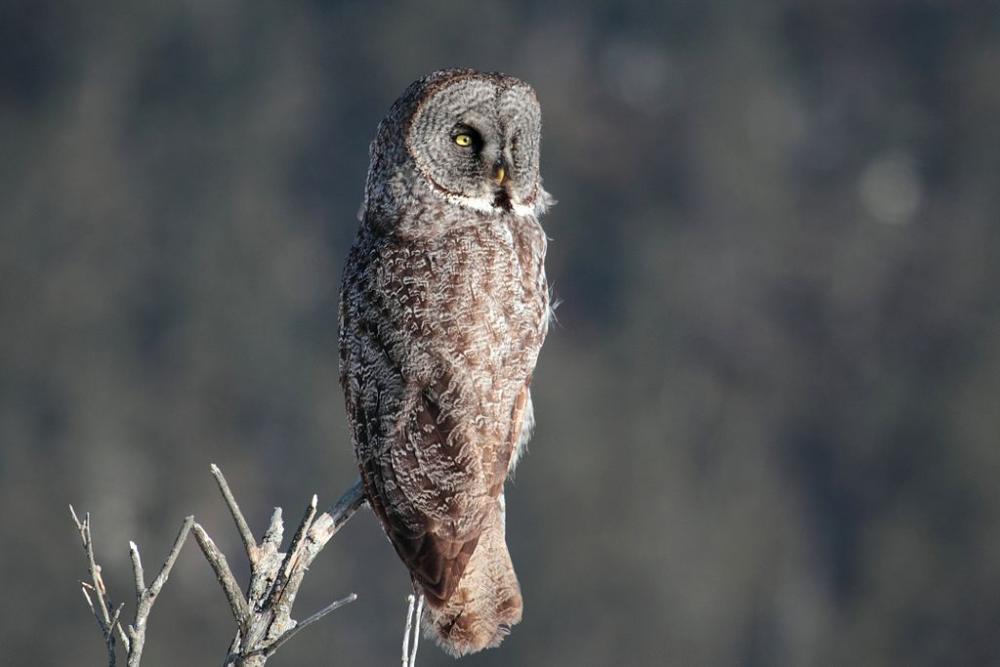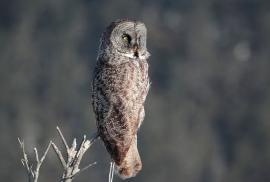Guide to Boreal Birds
Overview
Like other owls of the Far North, this species hunts during the day, often watching for prey from a low perch. Because it spends much of its time in dense conifers, it is often overlooked. One of the most elusive of birds, the Great Gray was discovered in America by Europeans before they realized that the species also occurs in Europe. It is also the official bird of Manitoba.
Although essentially non-migratory there are periodic incursions of this species further south when food supplies in the breeding range dwindle. This bird prefers areas of extensive mature coniferous forest where it feeds largely on voles but also shrews, squirrels, small hares, and even birds. Great Gray Owls lay 2-5 eggs that are incubated by the female only for 28-30 days. The clutch size varies depending on the amount of available prey so that more eggs are laid when more food is available. The Great Gray Owl's reliance on large blocks of mature forest makes it susceptible to landscape level changes in habitat from inappropriate forestry practices.
Description
24-33" (61-84 cm). W. 5' (1.5 m). A huge, dusky gray, earless owl of the North Woods, with yellow eyes, large facial disks, and distinctive black chin spot bordered by white patches, resembling a bow tie. Barred and Spotted owls are smaller, stockier, and browner, with dark eyes.
Voice
Very deep, booming whoo, repeated 10 times or more, and gradually descending the scale.
Nesting
2-5 white eggs in a bulky nest of sticks in a dense conifer.
Habitat
Coniferous forests and muskeg.
Range/Migration
Resident from Alaska and across interior Canada south to northern California, northern Wyoming, Minnesota, and Quebec. In winter wanders rarely southward into northern New England and Great Lakes region. Also in Eurasia.



